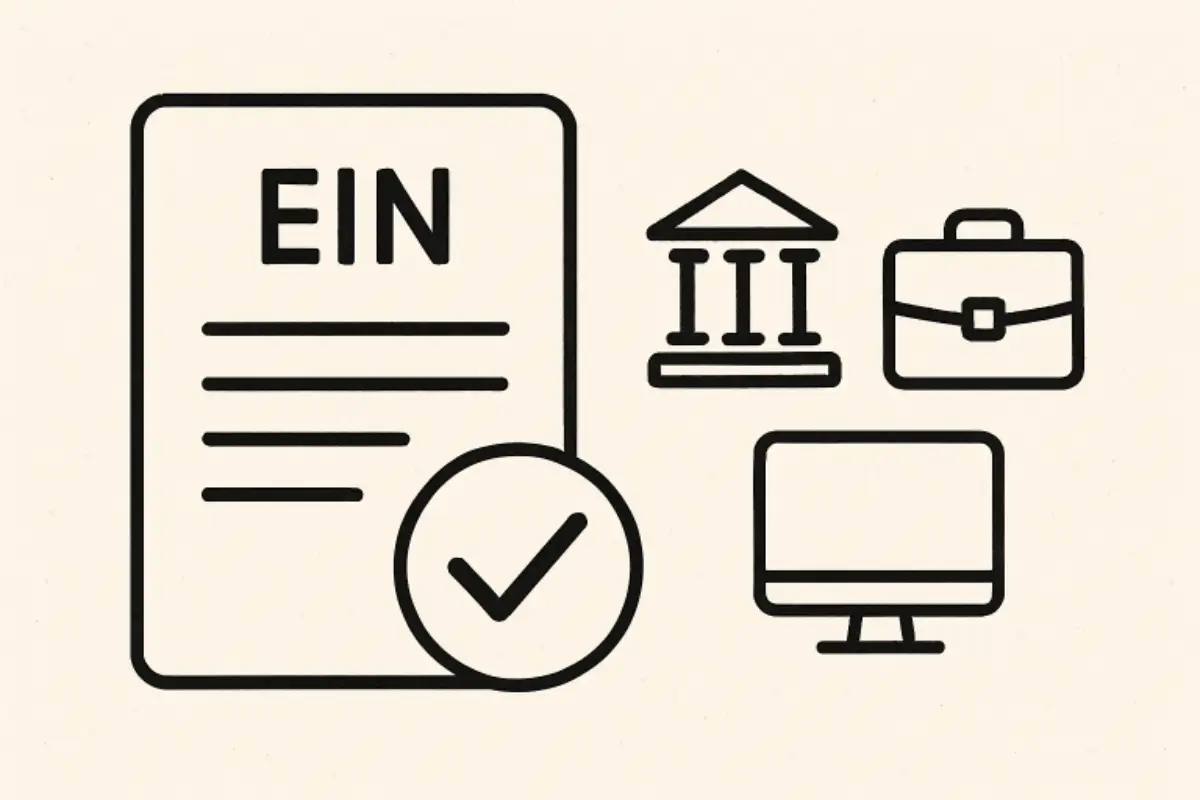An Employer Identification Number (EIN) is a unique nine-digit identifier issued by the Internal Revenue Service (IRS) to businesses operating in the United States. Often required for legal and banking purposes, an EIN distinguishes your business as a separate entity for tax reporting and compliance. Whether you are establishing a sole proprietorship, LLC, partnership, corporation, or nonprofit, acquiring an EIN is a foundational part of legitimizing your business activities.
Many new business owners find the EIN application process less intimidating by choosing to apply with Tax ID Bureau, a resource designed to streamline and successfully process EIN applications. Using the official IRS service can save time and ensure accuracy, especially if you’re unfamiliar with IRS requirements.
Contents
Why Apply for an EIN?
An EIN is essential for legitimate business in the U.S., needed to hire, open bank accounts, get licenses, and file taxes. Using an EIN separates Social Security info from business, reducing identity theft risk. Even sole proprietors and single-member LLCs get EINs to boost credibility and prepare for growth, as banks and vendors often require one for contracts or credit.
Choosing the Right Business Entity
The choice of business structure greatly impacts an entity’s eligibility and requirements for obtaining an Employer Identification Number (EIN). Common structures include sole proprietorships, partnerships, LLCs, corporations, and nonprofits, each with different tax and liability implications. Sole proprietorships generally need an EIN if they have employees or operate as a trust, estate, or non-profit.
Partnerships always require an EIN for tax purposes. Multi-member LLCs must have an EIN; single-member LLCs may need one depending on their tax classification. C Corps and S Corps must have an EIN for taxes and employees. Nonprofits need an EIN for federal tax exemption and operations. Consulting a legal or financial professional is advised to choose the right structure.
Step-by-Step EIN Application Process
There are three primary methods to apply for an EIN: online via the IRS website, by fax, or by mail. The online application is the quickest and most user-friendly, providing your EIN immediately upon completion. Here’s a breakdown of the process:
- Visit the IRS EIN Application Portal: Select your entity type and review the eligibility instructions that are provided.
- Accurately Complete the Application: Enter all required business and owner information as prompted.
- Double-Check Your Details: Mistakes at this stage could result in processing delays or IRS correspondence.
- Submit the Application: Online submissions are processed instantly, while mailed or faxed forms may take several days to a few weeks.
- Download and Save Your EIN Letter: This document is proof of your federally assigned tax ID and is often required for bank accounts or licensing.
If you need assistance, the IRS website features an extensive FAQ and troubleshooting section to address common scenarios and questions.
Gathering Required Information
Being prepared with all necessary documentation will accelerate your EIN application. Typically, you will need:
- The full legal name and any trade name of your business
- Principal business address and contact phone number
- Name, address, and Social Security Number (SSN) or Individual Taxpayer Identification Number (ITIN) of the business owner or responsible party
- Your chosen business entity type and a brief explanation for applying
- The date your business was founded or acquired
- Anticipated number of employees, industry sector, and primary business activity
Ensuring the accuracy and completeness of this information helps avoid delays and costly mistakes. For a more detailed list, the IRS official EIN resource provides comprehensive guidance.
Common Mistakes to Avoid
Completing an EIN application necessitates meticulous attention to detail to avoid common errors that impede the process. Key pitfalls include transposing numbers, misspelling the entity’s legal name, using outdated address or contact information, selecting an incorrect business entity type, submitting incomplete or illegible forms, and unintentionally requesting multiple EINs for a single legal entity.
It is crucial to double-verify all data entered into the application. Should any errors occur and be submitted, the Internal Revenue Service (IRS) provides specific guidance on correcting EIN application mistakes, which can help ensure the applicant remains on track with their business registration.
What to Do After Receiving Your EIN
The EIN confirmation notice is proof of a business’s legal standing and must be obtained and safeguarded. This Employer Identification Number (EIN) is crucial for several business operations, including opening business checking and savings accounts, filing federal, state, and payroll taxes, and registering necessary federal and state licenses or permits.
Furthermore, an EIN is instrumental in establishing robust relationships with suppliers and clients. It is also imperative to promptly notify the IRS of any significant business alterations, such as a change in address or ownership, to ensure ongoing compliance and prevent future complications by maintaining updated records.
Conclusion
An Employer Identification Number is more than just a tax requirement—it is a vital tool for legitimizing and protecting your business. From opening bank accounts and applying for licenses to hiring employees and building credibility with partners, an EIN lays the groundwork for secure and compliant operations. While the application process is straightforward, accuracy and preparedness are key to avoiding unnecessary delays.
Selecting the right business structure, gathering the proper documentation, and carefully completing the application ensures a smooth path toward compliance. Once obtained, safeguarding and correctly using your EIN will continue to support your business growth, efficiency, and long-term success.



